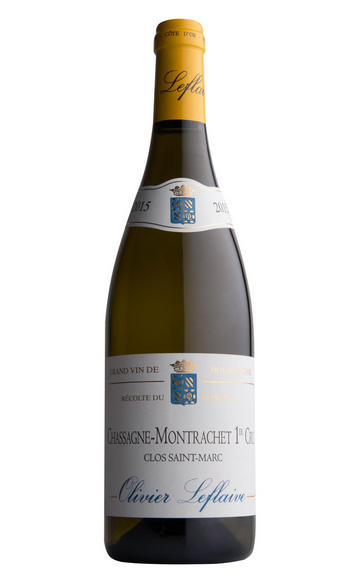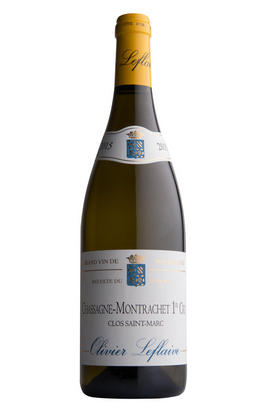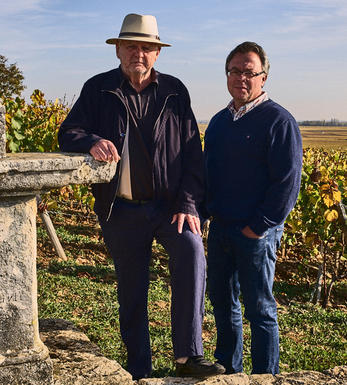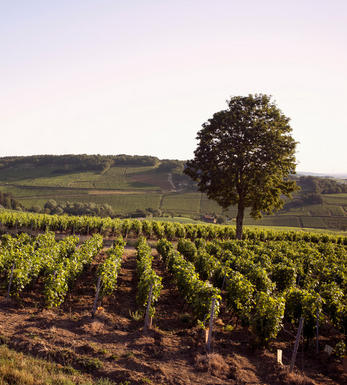
2017 Chassagne-Montrachet, Clos Saint-Marc, 1er Cru, Olivier Leflaive, Burgundy

About this WINE

Olivier Leflaive
Olivier Leflaive studied at business school before heading to Paris, where he lived a rather bohemian life in the 1970s. He returned to Burgundy in ’81 to manage Domaine Leflaive with his uncle Vincent and, later, his cousin Anne-Claude.
He set up his own négociant business in ’84, leaving the family domaine a decade later; he gave 15 years’ notice that he would take back his share of the vines.
Winemaker Franck Grux now makes 85-90 different cuvées, vinifying the equivalent of 120 hectares – 17 of which are estate-owned. The focus is on elegance and finesse over power.

Chassagne-Montrachet
When it comes to the world's greatest white wines, the border between Chassagne and Puligny is the ‘X’ that marks the spot, the treasure at the end of the rainbow. Within a few hundred metres lie five wonderful Grands Crus, three of which are in Chassagne. They are led by the luscious, perfumed but variable Le Montrachet, to which Chassagne gained permission in 1879, along with Puligny, to hyphenate its name.
Both Montrachet and the rich, nutty, honeyed Bâtard-Montrachet are shared between Chassagne and Puligny. The fragrant, very fine and rare Criots-Bâtard-Montrachet however, lies entirely within Chassagne's borders. The Grands Crus have their own appellations, which is why Chassagne (or Puligny) does not appear on the label.
Although the most southerly of the three great names of the Côte de Beaune, Chassagne's style is often described as lying between that of Puligny-Montrachet and Meursault: less fine than Puligny, less rich than Meursault but containing elements of both. Chassagne is minerally yet succulent, and often floral with hints of hazelnuts. Despite a bevy of very good Premiers Crus, it is not as good or famous, overall, as Meursault and Puligny, but it is usually extremely good value. Grands Crus should not be opened before eight years of age, and can last for 20 or more. Premiers Crus are at their best from five to 15 years of age; village wines from three to eight.
Perhaps surprisingly, given that the name ‘Montrachet’ is so synonymous with white wine, much of the soil in Chassagne is more suited to Pinot Noir than Chardonnay. Indeed it was only really in the second half of the 20th century that white wines began to dominate here. The reds have a firm tannic style that needs time to soften, with the best examples coming from the Premiers Crus Morgeot, Boudriotte and Clos-St Jean. At their best they combine the weight of the Côte de Nuits with the suppleness of the Côte de Beaune.
180 hectares of village Chassagne-Montrachet
159 hectares of Premier Cru vineyards. Several of the larger ones are subdivided and may be cited under various different names. The best include Caillerets, Ruchottes, Chaumées, La Boudriotte
11 hectares of Grand Cru vineyards: Le Montrachet (part), Bâtard-Montrachet (part) and Criots-Bâtard-Montrachet

Chardonnay
Chardonnay is often seen as the king of white wine grapes and one of the most widely planted in the world It is suited to a wide variety of soils, though it excels in soils with a high limestone content as found in Champagne, Chablis, and the Côte D`Or.
Burgundy is Chardonnay's spiritual home and the best White Burgundies are dry, rich, honeyed wines with marvellous poise, elegance and balance. They are unquestionably the finest dry white wines in the world. Chardonnay plays a crucial role in the Champagne blend, providing structure and finesse, and is the sole grape in Blanc de Blancs.
It is quantitatively important in California and Australia, is widely planted in Chile and South Africa, and is the second most widely planted grape in New Zealand. In warm climates Chardonnay has a tendency to develop very high sugar levels during the final stages of ripening and this can occur at the expense of acidity. Late picking is a common problem and can result in blowsy and flabby wines that lack structure and definition.
Recently in the New World, we have seen a move towards more elegant, better- balanced and less oak-driven Chardonnays, and this is to be welcomed.


Buying options
Add to wishlist
Description
This is from a sub-section of Les Vergers, planted with 25-year-old vines. This is classic and intensely mineral Chassagne. Yellow peach and flint aromas jostle for attention while the palate has impressive concentration and weight, with hot stone minerals adding complexity and satisfying dry extract prolonging the finish. Drink 2023-2029
After studying at business school, Olivier Leflaive headed to Paris to live a rather bohemian life during the 1970s, working in music and television. He returned to Burgundy in 1981 to manage Domaine Leflaive with his uncle Vincent and later his cousin Anne-Claude. Having long aspired to work for himself, he set up his own négociant business in 1984 and, upon leaving the family domaine a decade later, he gave 15 years’ notice that he would take back his share of the family vines from 2009. Experienced winemaker Franck Grux now makes between 85 and 90 different cuvées, vinifying the equivalent of 120 hectares, of which 17 are estate. The focus here is on elegance and finesse over power.
Franck emphasised the importance of removing excess shoots and buds on the vine early in the season to ensure yields did not become excessive, a practice he encouraged his growers to follow. The results are evident in the wines, which display wonderful concentration and texture, generosity in the mid-palate, precise, direct fruit and a sapid acidity. The excellent natural balance of the wines made vinification relatively straightforward and has yielded wines which Franck describes as “serious” and, in many respects, comparable to the 2014s. Unless otherwise stated, all wines are domaine.
wine at a glance
Delivery and quality guarantee